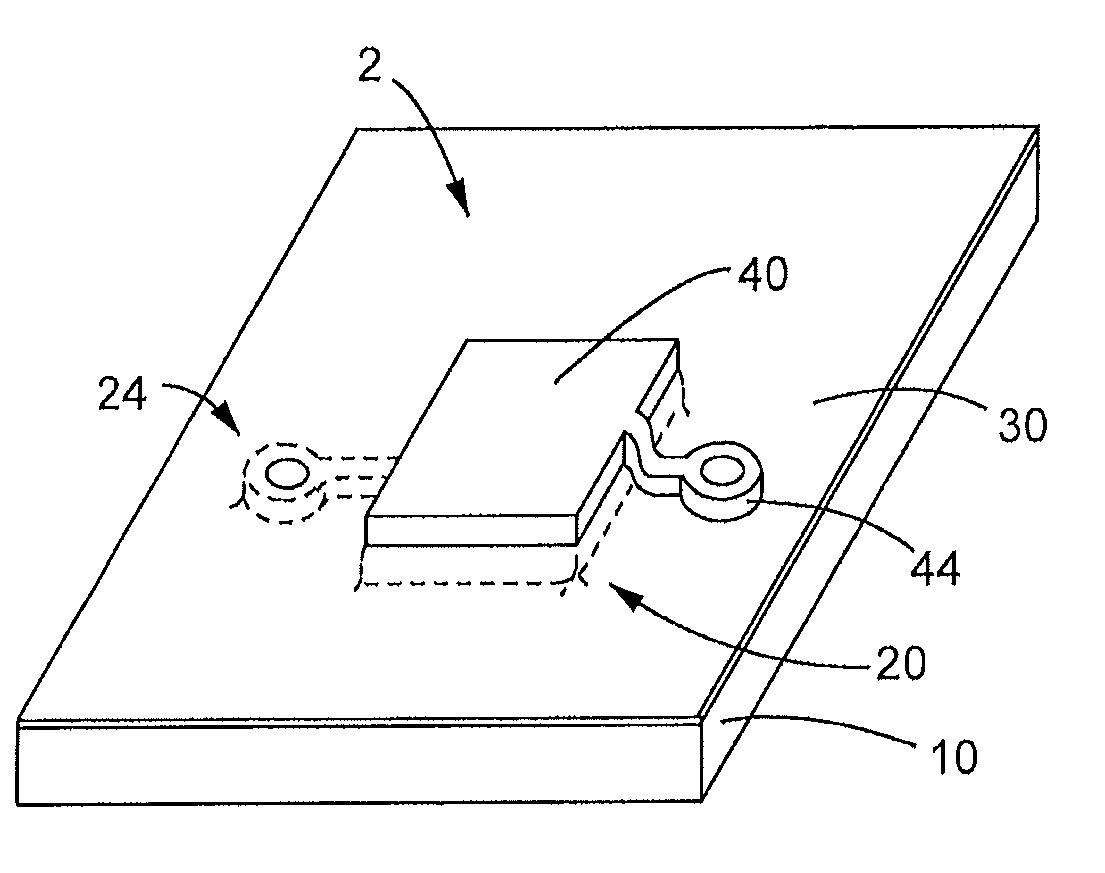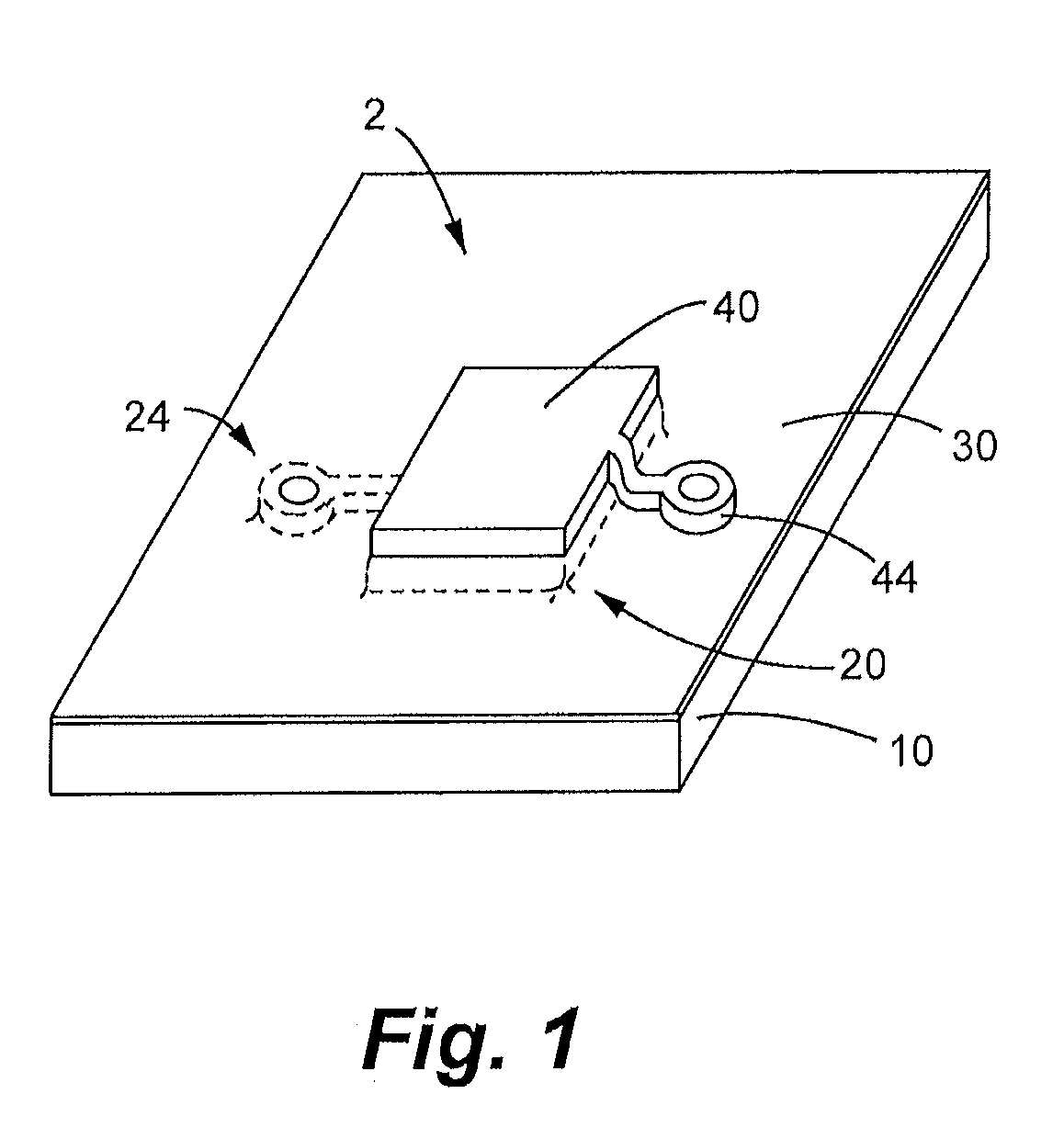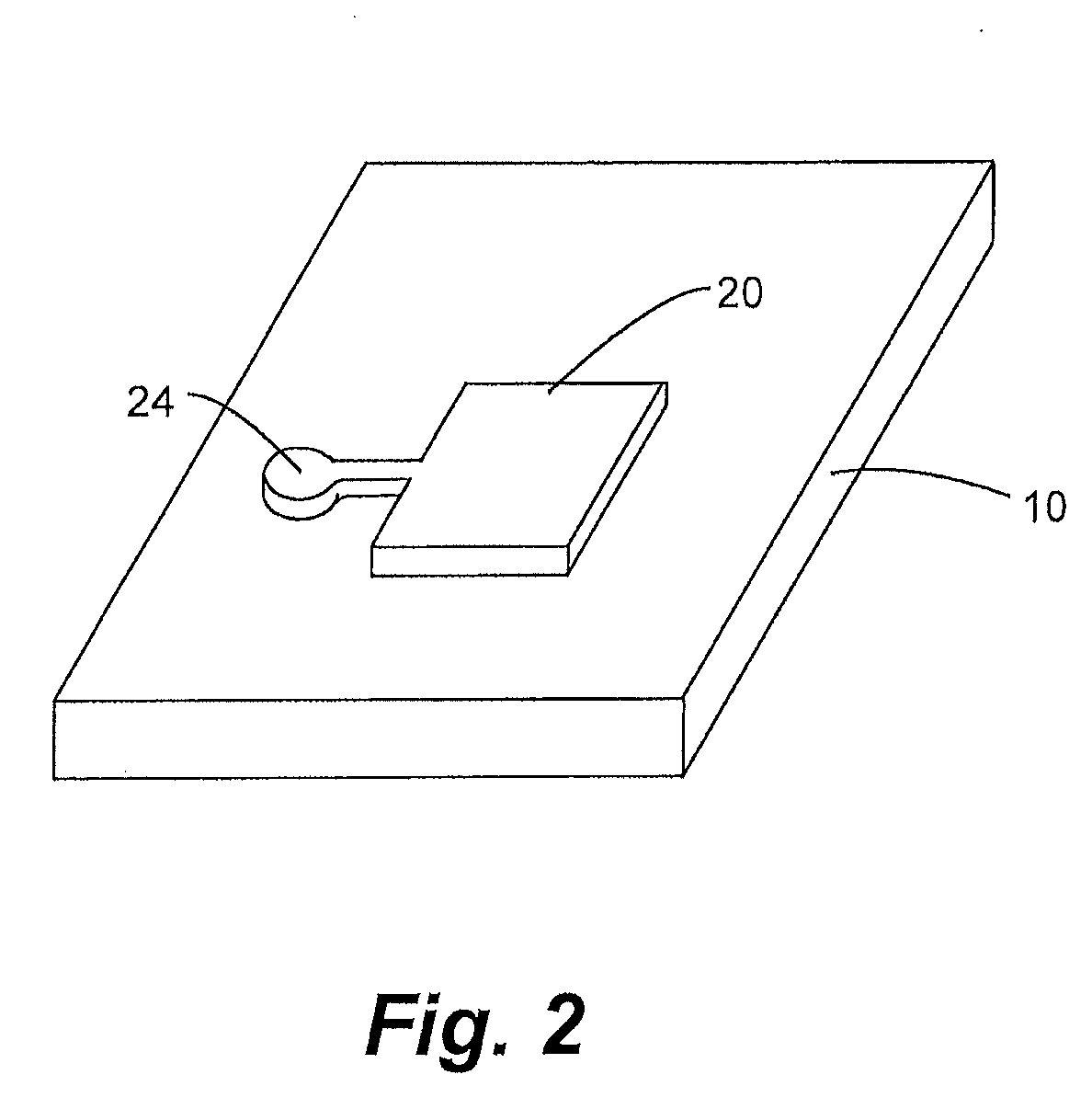Atomic layer deposition process for manufacture of battery electrodes, capacitors, resistors, and catalyzers
a technology of atomic layer deposition and battery electrodes, which is applied in the direction of catalyst activation/preparation, metal/metal-oxide/metal-hydroxide catalysts, fixed capacitors, etc., can solve the problems of dielectric films that are difficult to manufacture on pcbs, limited equipment capabilities, and size limitations, and achieve low serial resistance, no leakage, and no damage to the surrounding electronics
- Summary
- Abstract
- Description
- Claims
- Application Information
AI Technical Summary
Benefits of technology
Problems solved by technology
Method used
Image
Examples
Embodiment Construction
[0043]As discussed above, ALD is a manufacturing technique that allows one or more layers of atomic-scale precursor materials to be deposed on a surface, and has several benefits over other methods of manufacturing, including but not limited to operating at low pressures and temperatures, providing consistent and reliable atomic structures, and achieving uniform coating thickness at exposed and hidden surfaces that are not achievable with previous technologies. (See Appendix A to the U.S. Provisional Patent Application Nos. 61 / 028,383 and 61 / 028,402 for additional information on ALD technologies.) A typical ALD process may be summarized as comprising multiple cycles, with each cycle comprising two precursor stages (where two precursor materials are introduced) and two purge stages.
[0044]In the first precursor stage, the selected first precursor is introduced in to a reaction chamber for the purpose of reacting with a material. For example, Trimethyl Aluminum (TMA) may be used as a p...
PUM
| Property | Measurement | Unit |
|---|---|---|
| Fraction | aaaaa | aaaaa |
| Time | aaaaa | aaaaa |
| Temperature | aaaaa | aaaaa |
Abstract
Description
Claims
Application Information
 Login to View More
Login to View More - R&D
- Intellectual Property
- Life Sciences
- Materials
- Tech Scout
- Unparalleled Data Quality
- Higher Quality Content
- 60% Fewer Hallucinations
Browse by: Latest US Patents, China's latest patents, Technical Efficacy Thesaurus, Application Domain, Technology Topic, Popular Technical Reports.
© 2025 PatSnap. All rights reserved.Legal|Privacy policy|Modern Slavery Act Transparency Statement|Sitemap|About US| Contact US: help@patsnap.com



